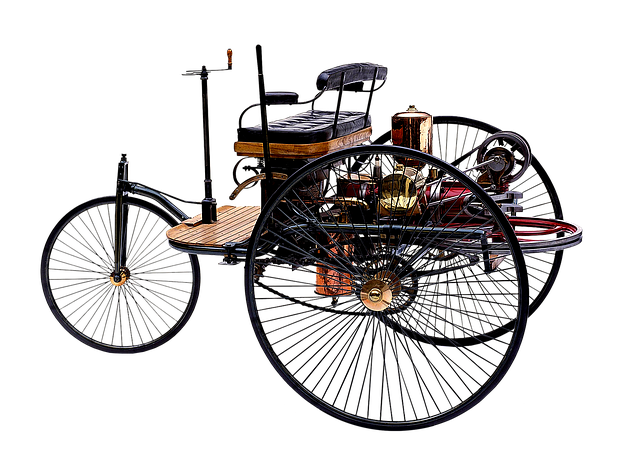Looking to register your car in California? This comprehensive guide breaks down the process step-by-step. From understanding eligibility requirements for car registration, gathering essential documents for DMV VIN verification, preparing your vehicle for inspection and title transfer, to completing the registration process, we’ve got you covered. We also cover post-registration compliance and vehicle maintenance to ensure a smooth ownership experience.
- Understand Eligibility Requirements for Car Registration
- Gather Necessary Documents for DMV Vin Verification
- Prepare Your Vehicle for Inspection and Title Transfer
- Complete the DMV Registration Process Step-by-Step
- Ensure Post-Registration Compliance and Vehicle Maintenance
Understand Eligibility Requirements for Car Registration

Before you begin the registration process, it’s crucial to ensure your vehicle meets California’s eligibility requirements. All vehicles operated on California roads must be properly registered and have a valid safety inspection certificate. You’ll also need to undergo a DMV VIN verification, which confirms the vehicle’s identity using its unique Vehicle Identification Number (VIN). This step is essential for tracking vehicle history and ensuring compliance with emission standards.
Additionally, your car must possess a current registration from the previous state where it was owned, proof of insurance, and any applicable fees. If you’re transferring a title from out-of-state, you might need to complete additional paperwork. For convenience, many residents opt for mobile VIN inspection services or use a mobile vin verifier to streamline the initial verification process.
Gather Necessary Documents for DMV Vin Verification

Before heading to the DMV for car registration, ensure you gather all the necessary documents required for a successful dmv vin verification. This process is crucial to establishing the vehicle’s identity and history. You’ll need the standard paperwork like the title or registration certificate from the previous state (if applicable), proof of insurance, and your valid driver’s license.
Additionally, prepare the Vehicle Identification Number (VIN) from your car, which can be found on the vehicle’s certification label, located typically on the driver’s side door frame. For convenience, many individuals opt for a mobile vin inspection or use a mobile vin verifier to complete this step swiftly and accurately. This digital verification process streamlines the initial check, making the registration experience smoother.
Prepare Your Vehicle for Inspection and Title Transfer

Before you begin the registration process, it’s crucial to ensure your vehicle is ready for inspection by preparing essential documents and ensuring it meets California’s standards. Start by gathering all the necessary paperwork, including your vehicle’s title, proof of insurance, and current registration (if applicable). Additionally, you’ll need a valid driver’s license and a DMV form 137 (Vehicle History Report or VHR) for a successful DMV VIN verification.
For a seamless vin inspection process, consider using a mobile vin verifier to verify your vehicle’s history before heading to the DMV. This step is crucial as it ensures that your car has no outstanding issues and helps you avoid potential delays during registration. By having all these elements in place, you’ll be well-prepared for a smooth transition from ownership transfer to official California vehicle registration.
Complete the DMV Registration Process Step-by-Step

Following a successful purchase, the first step to owning your new car in California is to complete the DMV registration process. Here’s a straightforward guide to help you navigate it. Start by gathering all necessary documents, including proof of identity, residency, and vehicle ownership (like a bill of sale or previous registration). Visit a local DMV office or use their online services for convenience. If you opt for the latter, ensure you have your vehicle’s Vehicle Identification Number (VIN) readily available as it’s crucial for vin verification.
During the registration process, you’ll be required to pass an emission test and complete any outstanding safety inspections. Once all requirements are met, a DMV employee will process your application, cross-reference your information, and verify your vehicle’s history through a VIN inspection. After successful verification, they’ll issue a registration certificate, and your car will officially be registered in California. For those who prefer a mobile vin verifier or even conduct a vin inspection themselves, using online tools can expedite the process by providing instant access to detailed vehicle histories.
Ensure Post-Registration Compliance and Vehicle Maintenance

After successfully registering your vehicle with the California DMV, it’s crucial to maintain compliance and keep your car in top condition. One critical step is ensuring proper vehicle maintenance, including regular inspections and repairs. This not only extends the life of your vehicle but also ensures it meets safety standards.
Additionally, remember that DMV vin verification is essential for maintaining accurate records. Consider using a mobile vin inspection or mobile vin verifier service to streamline this process. These services can help you check your vehicle’s history, detect any potential issues, and ensure all documentation is up-to-date. By staying on top of these aspects, you’ll contribute to the overall safety of California’s roads and avoid any legal complications.
Registering a car in California involves several steps, from understanding eligibility requirements to completing the DMV vin verification process. By gathering all necessary documents, preparing your vehicle for inspection, and adhering to post-registration compliance, you can ensure a smooth ownership experience. Remember, proper vehicle maintenance not only extends the life of your car but also keeps you safe on the road. So, take a dive into these steps, and get ready to hit the California highways with confidence!
